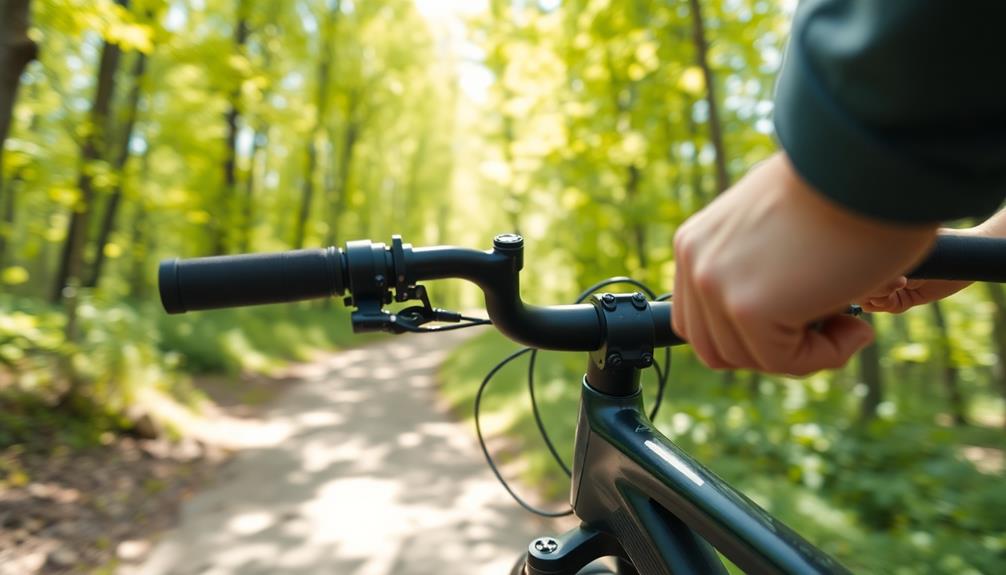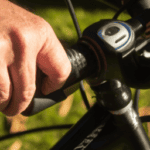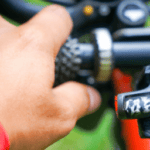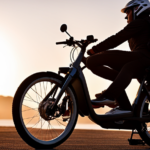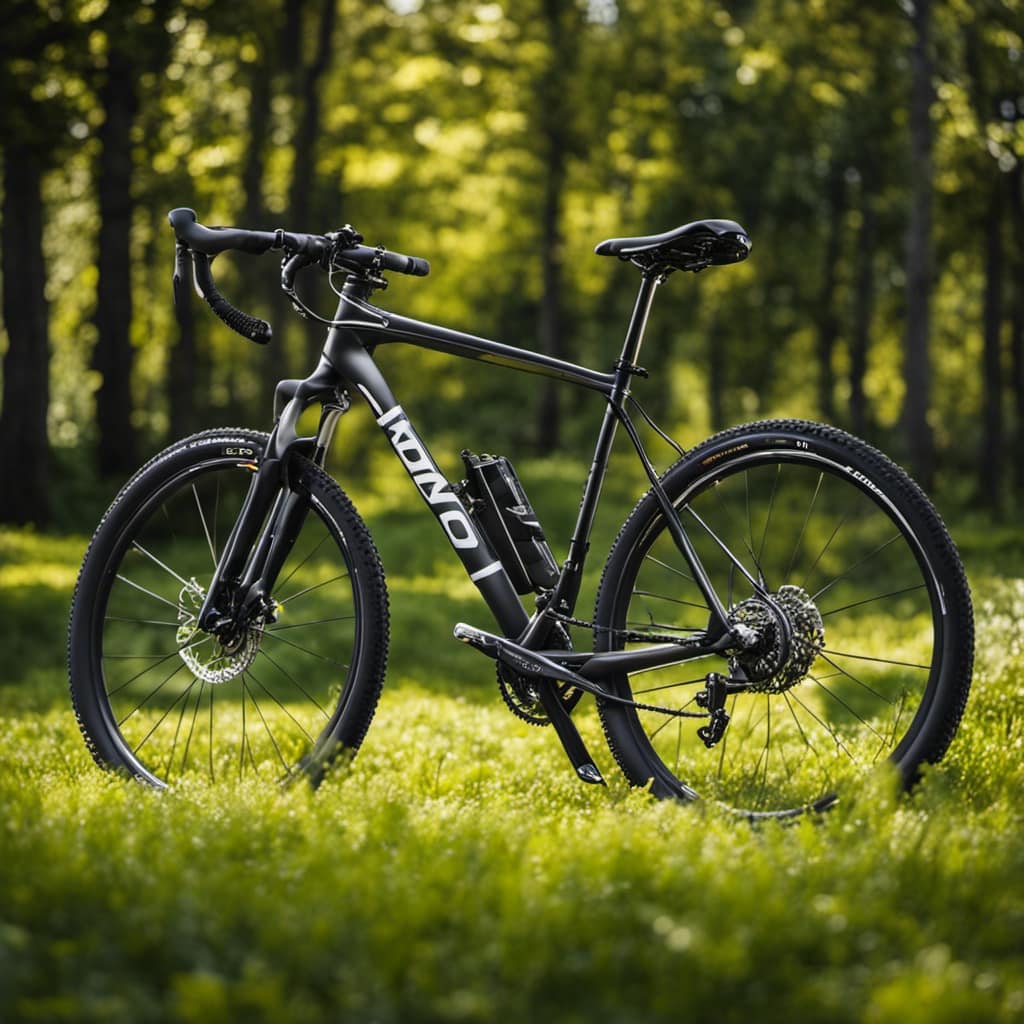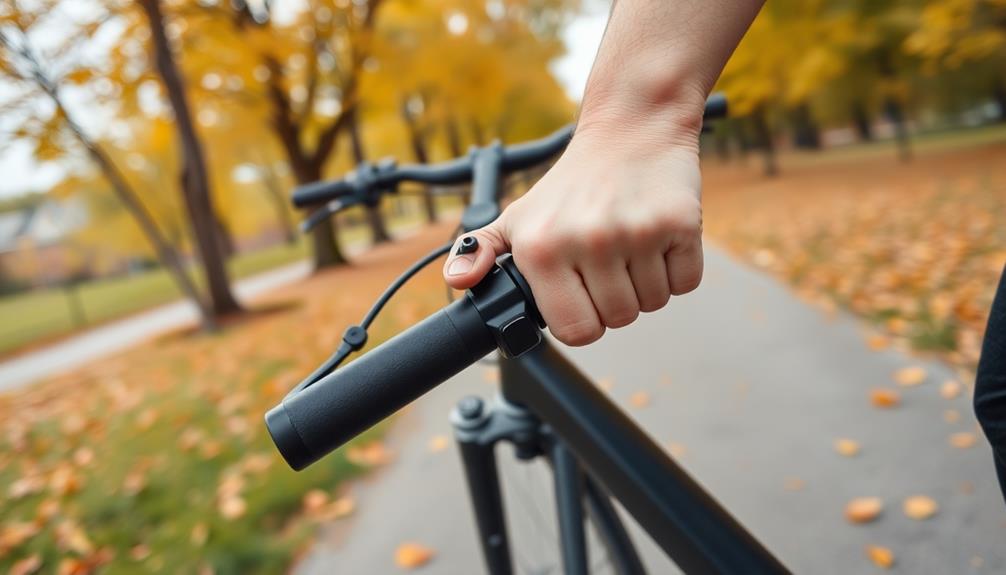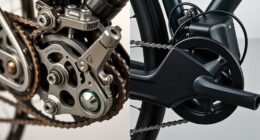Mastering gear shifting on your hybrid bike is key for a smooth ride. Always anticipate terrain changes to select the right gear—lower for climbs and higher for flat stretches. Use your left shifter for the front chainrings and the right for the rear cassette; shift while pedaling for seamless changes. Limit your shifts to one or two at a time to avoid chain skipping. Don't forget to regularly maintain your bike by cleaning and lubricating the drivetrain. With practice, you'll develop muscle memory that enhances your cycling experience, and there's more you can discover about optimizing your shifting technique.
Key Takeaways
- Anticipate terrain changes to shift gears proactively, maintaining a comfortable cadence and energy efficiency.
- Use lower gears for steep climbs to reduce muscle fatigue and enhance climbing ability.
- Shift gears while pedaling to ensure smooth transitions and prevent chain skipping.
- Limit gear changes to one or two at a time to maintain drivetrain integrity.
- Regularly maintain your bike by cleaning, lubricating, and inspecting the drivetrain for optimal performance.
Importance of Gear Shifting
When you ride a hybrid bike, understanding the importance of gear shifting is crucial for maximizing your performance. Proper gear shifting allows you to maintain an efficient pedaling cadence, adapting your effort based on the terrain changes you encounter.
When climbing, selecting lower gears reduces muscle fatigue and helps you conquer inclines without overexerting yourself. Conversely, higher gears are ideal for flat or downhill sections, enabling you to enhance your cycling performance and speed.
Additionally, just as in GMC tuning where maximizing performance is key, being proactive in your gear selection can greatly improve your riding efficiency and overall enjoyment of the ride. GMC tuning techniques can be likened to the art of managing your bike's gears effectively.
Anticipating terrain changes and shifting gears accordingly lets you maintain a comfortable cadence, improving your overall bike handling, especially on mixed terrain common in hybrid biking. This proactive approach not only enhances your riding experience but also contributes to the longevity of your bike's drivetrain components.
By minimizing unnecessary wear and tear through appropriate gear usage, you guarantee that your bike remains in peak condition for years to come.
Ultimately, mastering gear shifting is essential for every hybrid cyclist. It empowers you to ride efficiently, effectively manage your energy output, and enjoy a smoother, more enjoyable ride through diverse terrains.
Understanding Gear Ratios
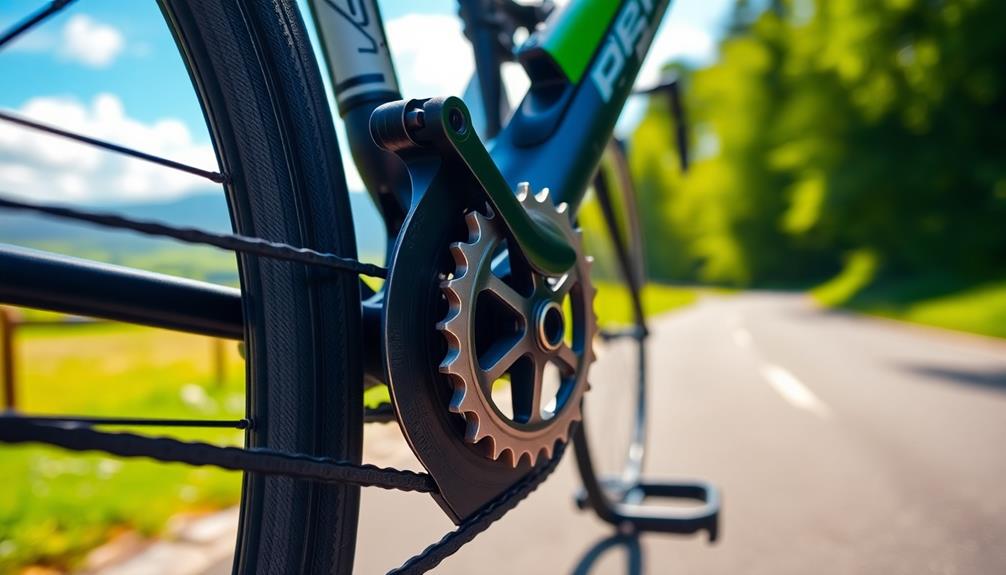
Mastering gear shifting not only enhances your riding experience but also leads you to a deeper understanding of gear ratios. Gear ratios are determined by the number of teeth on your chainrings and the cogs in your cassette. A higher gear ratio, like a 50-tooth chainring paired with a 25-tooth cog, can increase your speed but demands more effort to pedal.
On the other hand, a lower gear ratio, such as 1:1, makes pedaling easier, which is ideal for climbing steep inclines. Additionally, achieving the right balance in gear ratios can greatly influence the overall performance of your bike, similar to how color accuracy impacts overall image quality in projectors.
Understanding gear changes is essential because the appropriate ratio supports maintaining an efficient cadence, typically between 80-100 RPM, across various terrains. For instance, if you're road biking, you'll favor higher ratios for speed, while mountain biking calls for lower ratios to tackle those challenging climbs.
By selecting the right front chainrings and cassette, you can effectively adjust your gear ratios, tailoring your bike to your riding style and the terrain you're riding.
Shifting gears at the right moment can lead to a smoother ride, ensuring that you're not overexerting yourself unnecessarily while enjoying your time on the bike.
Types of Gear Systems
Hybrid bikes typically feature two main types of gear systems: derailleur and internal hub systems. Derailleur systems engage with multiple chainrings and rear cogs, offering a wide range of gears, typically between 7 and 27 speeds. This setup allows you to fine-tune your gear ratios, making it easier to tackle various terrains and riding conditions.
For example, changing gears smoothly is essential to maintain your cadence and momentum while riding. You'll often find shifters like twist-style or trigger shifters that enable quick and easy gear shifting while you ride.
On the other hand, internal hub gears, such as three-speed or seven-speed setups, simplify the gear shifting process. These systems allow you to shift gears while stopped and have fewer exposed components, which reduces your maintenance needs.
With an internal hub, you won't have to worry as much about dirt and debris affecting performance.
A typical hybrid bike setup might feature a 21-speed configuration, balancing versatility for urban commuting and recreational riding. Understanding the differences between these gear systems will help you choose the right one for your cycling needs, ultimately enhancing your overall riding experience.
How to Shift Gears
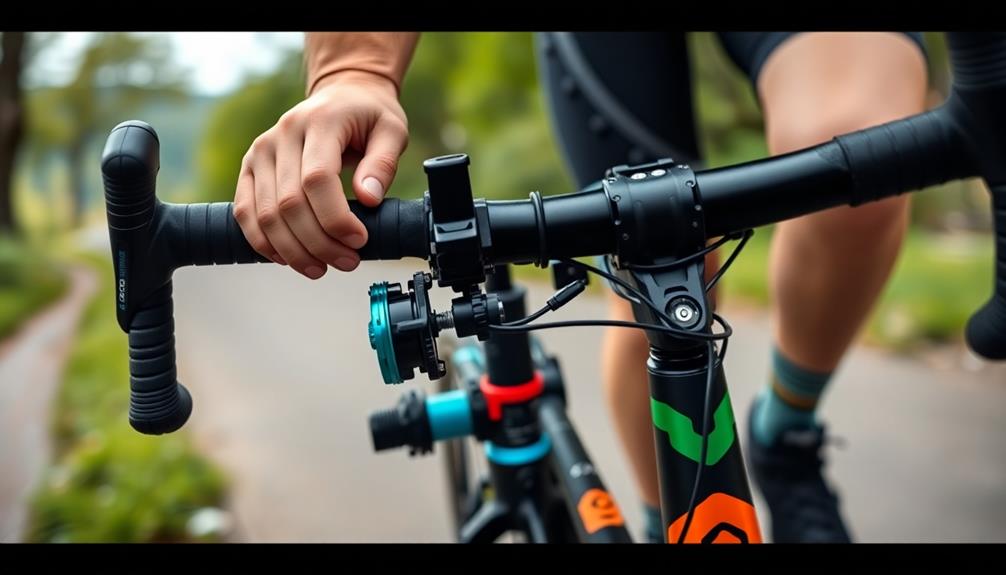
Proper gear shifting is essential for any cyclist looking to optimize their ride. On your hybrid bike, the left-hand shifter controls the front chainrings, allowing for larger gear changes, while the right-hand shifter fine-tunes your selection via the rear cassette.
Always shift gears while pedaling; this guarantees smooth shifts and reduces strain on your drivetrain components. Enhancements in gear technology, similar to Toyota Tuning, can also improve your bike's performance and efficiency.
Anticipating terrain changes is key—shift before you encounter a climb or descent to maintain a steady cadence. For steep inclines, switch to lower gears to ease your pedaling effort, while higher gears work best on flat terrain to maximize your speed and efficiency.
To maintain the health of your bike, limit your gear shifts to one or two at a time. This helps avoid chain skipping and prolongs the life of your drivetrain.
Tips for Effective Shifting
When it comes to effective alteration, being proactive is essential for a smooth ride. Anticipate terrain changes and shift gears before you reach inclines or obstacles, just as Paula Deen's Wedding Highlights showcase the importance of preparation in creating memorable moments. This helps you maintain cadence and prevents unnecessary strain on the drivetrain.
As you approach steep climbs, shift to lower gears, like gear 1, to ease pedaling and conserve energy while maximizing torque. Limit your gear changes to one or two at a time. This minimizes the risk of chain skipping and guarantees smoother changes between the front chainring and rear gears.
Practicing your shifting in safe, controlled environments allows you to develop muscle memory for best gear selection based on varying riding conditions. Regularly check your bike's cable tension and keep the drivetrain lubricated. This enhances shifting performance and prolongs the lifespan of your components.
Maintenance for Optimal Performance
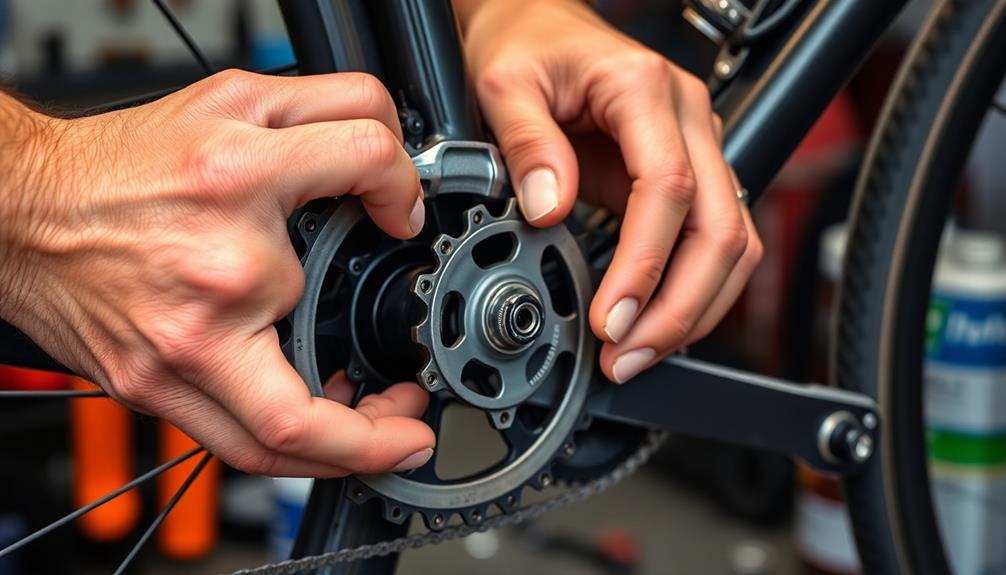
Maintaining your bike's drivetrain is fundamental for best performance and a smooth ride. Regularly clean your chain and gears to remove dirt and grime; this simple task guarantees optimal performance during gear shifting.
By lubricating moving parts, like the chain and derailleur pivots, you reduce friction and wear, letting your components last longer and work efficiently. Incorporating eco-friendly practices, like using locally sourced lubricants, can further enhance your bike maintenance routine while supporting sustainable living environmental benefits of wood stoves.
Don't overlook periodic derailleur adjustments. Proper alignment is essential for accurate gear changes; misalignment can lead to skipped gears and frustrating shifting difficulties.
Additionally, checking your tire pressure is important. Under-inflated tires strain the drivetrain, negatively affecting shift smoothness and overall performance.
Be proactive in inspecting your bike for signs of wear. If you hear unusual noises or experience slipping gears, it's time for maintenance. Early detection can prevent major malfunctions, saving you time and money in the long run.
Frequently Asked Questions
How to Shift Gears on a Hybrid Bike?
To shift gears on your hybrid bike, use the left shifter for larger changes and the right for smaller adjustments. Always pedal while shifting, and anticipate terrain changes to maintain a smooth ride. Practice often!
How Do I Make My Bike Gears Shift Easier?
To make your bike gears shift easier, regularly clean and lubricate the chain, adjust the derailleur for proper alignment, maintain cable tension, and practice shifting on flat terrain to build muscle memory.
What Order Should I Shift Gears on My Bike?
When it comes to shifting gears, you've gotta know the ropes. Always shift the left-hand shifter first for the front, then the right for the rear. This keeps your ride smooth and efficient on varying terrain.
How Many Gears Should a Hybrid Bike Have?
When choosing a hybrid bike, consider a gear range that suits your riding style. A 7-speed is perfect for casual rides, but a 21-speed offers versatility for tackling hills and varied terrains effectively.
Conclusion
Mastering gear shifting on your hybrid bike can truly enhance your riding experience. Did you know that using the right gear can improve your efficiency by up to 20%? By understanding gear ratios and practicing effective shifting techniques, you'll tackle any terrain with ease. Plus, regular maintenance guarantees your bike performs at its best, keeping you comfortable and confident. So, get out there, shift gears like a pro, and enjoy every ride!
